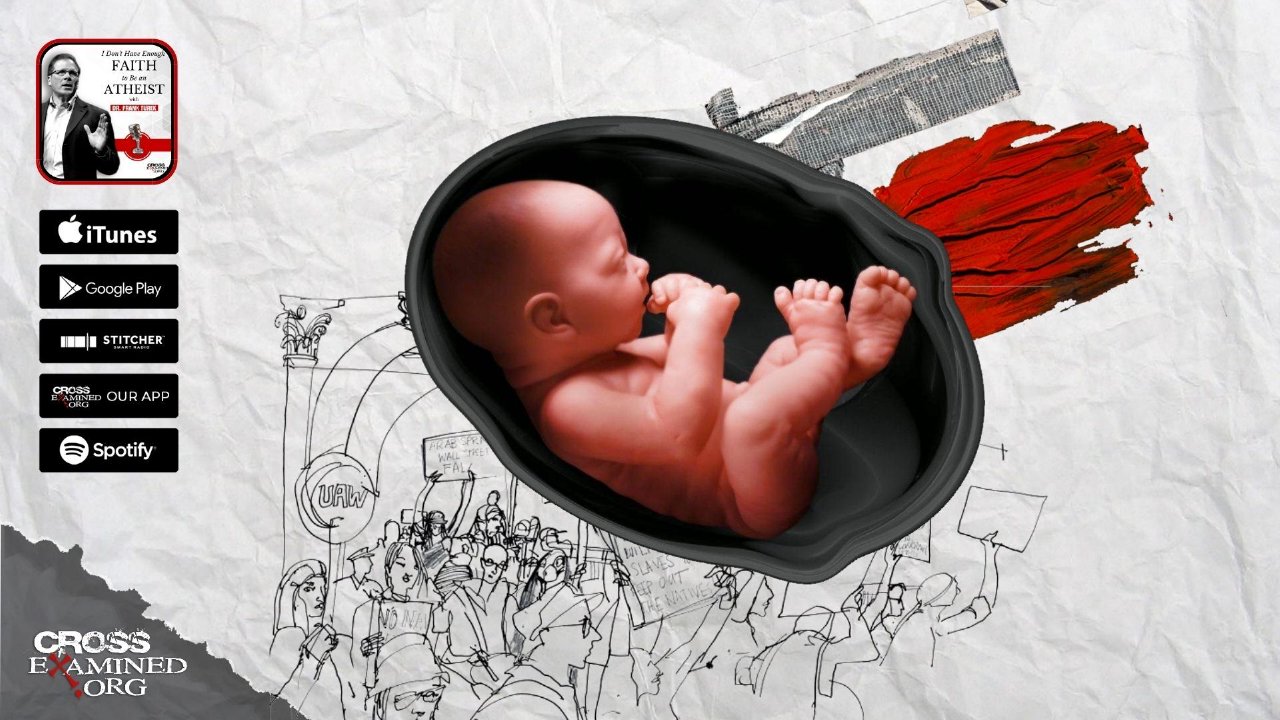When Does Personhood Begin? Part II
By
Previously we looked at some of the arguments and assumptions made to assert that the unborn either are not humans or are not “persons”.
But now we’ll look at another kind of objection. Some pro-choice advocates know that the unborn are biologically human from fertilization. However, they’ll argue that while the unborn are humans biologically, they are not full-fledged humans in a “morally relevant” sense. While they may be a member of the species Homo Sapiens, they should not be considered a member of the human community until they fulfill certain criteria, or reach a certain stage of development.
In my previous entry, I looked at why we can’t use the immediately exercisable capacity for consciousness or the ability to feel pain as criteria for acceptance into the human community.
Remember that the right to life is a categorical property; you either have it or you don’t. As such, it can’t be tied to a property that comes in degrees (such as consciousness).
A natural right, like the right to live or to defend yourself, should not be confused with legal rights, such as the right to vote or drive. A natural right is a right that every human has by virtue of our common human nature, whereas a legal right is a right that the government grants based on our common status as citizens. These rights are gained through maturity or ability. When we say that an embryo is no morally different than you or me, we recognize that they have obvious differences. An embryo can no more drive a car than a toddler should be trusted to vote for president. However, the right to life is an intrinsic right shared by all humans, regardless of their maturity level or instrumental value to society.
So if not at fertilization, when should our natural rights be attributed to us? There are several stages along human development that are offered, but none of those stages succeed as an appropriate line to draw between a state of having no natural rights and a state of acquiring natural human rights. Let’s look at those.
1) Implantation/Quickening.
Once the mother’s egg is fertilized by the father’s sperm, both egg and sperm cease to exist and conception has occurred, bringing into existence a new, unique human individual. It takes about a week for the zygote to be propelled down the fallopian tube (via hair-like structures called cilia) and implant in the uterus.
The important thing to take note of is the fact that the entity that implants is the same entity that was conceived just a week ago. There is no grounds for considering the implanted embryo as a member of the human community, but not that same entity before it implanted itself there. Embryologists consistently agree that the embryo from fertilization is a living, human organism.
Doctor Bernard Nathanson [1] argues that at the moment of implantation, the unborn “establishes its presence to the rest of us by transmitting its own signals — by producing hormones — approximately one week after fertilization and as soon as it burrows into the alien uterine wall.” For Nathanson implantation is significant because prior to this time the unborn “has the genetic structure but is incomplete, lacking the essential element that produces life: an interface with the human community and communication of the fact that it is there.” [2]
Francis Beckwith notes that there are two flaws with this argument. First, you are who you are regardless of whether anyone notices you’re there. Being noticed does not change one’s nature. One interacts with a human being, one does not make a being human by interaction. Second, this does not explain humans conceived through IVF in a petri dish. Just as there is no difference between a Bill Clinton in a possible world who pumps gas in Little Rock, and the Bill Clinton in the actual world who is the former president of the United States, there is no essential difference between an embryo in a petri dish and an embryo implanted in the womb.
Quickening is the point in pregnancy at which the fetus’ movements can first be felt by the pregnant woman. I have grouped it here because the objection to this criterion is essentially similar to the objection for implantation. Aside from showing that the entity is the same living human organism before it quickened, one’s nature does not change once they have been noticed.
Additionally, if movement is necessary for full-fledged humanity, then this argument proves too much. This would disqualify the paralyzed from full-fledged humanity.
2) Viability.
Viability is the point in a pregnancy after which the unborn fetus can realistically survive outside the womb. Currently, viability is considered to be at about 24 weeks’ gestation, although some babies have been born at 21 weeks and survived.
A major flaw with this argument is that it’s arbitrary. Fifty years ago, viability was considered to be at 28 or 29 weeks’ gestation. So one would have to argue that an unborn child is a full-fledged human at 24 weeks now, but fifty years ago that same child would not have been a full-fledged human. Viability is a moving target that changes as technology improves.
Also, Siamese twins depend on each other for their survival but both are considered to be persons. People on life support are also completely dependent on the machine for their survival, but if viability were necessary then we could kill them for any reason even if they have a good chance of recovery. It simply makes no sense to use viability as your criterion for establishing basic human rights.
3) Birth.
There is nothing “mystical” about birth that suddenly bestows upon an entity “humanity” or “personhood.” As I mentioned in my previous article, an eight-inch journey down the birth canal does not change the nature or value of the entity.
Many pro-choice people believe abortion should remain legal because of bodily rights arguments, and if they are right, then birth would be the sensible place to draw the line. After birth we would be obligated to keep you alive, but not before. This argument will be addressed in my next article.
4) After birth.
Some pro-choice philosophers (e.g. Michael Tooley and Peter Singer) support infanticide because there is no morally relevant difference between a child inside the womb and a child outside the womb. They are correct, even if their conclusion is repugnant to our moral intuitions. They are simply being consistent and allowing the pro-choice position to lead to its natural conclusion. I’ll plan on writing more on “after-birth abortion” in the future, but essentially the entity outside the womb is the same one inside the womb.
There simply isn’t any reason for these criteria to suddenly establish value or change the nature of the unborn. We know that the unborn are human from fertilization. As there is no morally relevant difference between a zygote, embryo, fetus, or toddler (or later stages of development), then all humans should be protected, even very young ones.
[1] Doctor Nathanson is a former abortionist and founder of NARAL, who later converted to the pro-life position.
[2] Dr. Bernard Nathanson (with Richard Ostling), Aborting America, (New York: Doubleday, 1979), p. 216, as quoted in Francis J. Beckwith, Defending Life: A Moral and Legal Case Against Abortion Choice, (Cambridge University Press: Cambridge, New York, 2007), p. 73.
Original Blog Source: http://bit.ly/2pUNPJH











Leave a Reply
Want to join the discussion?Feel free to contribute!